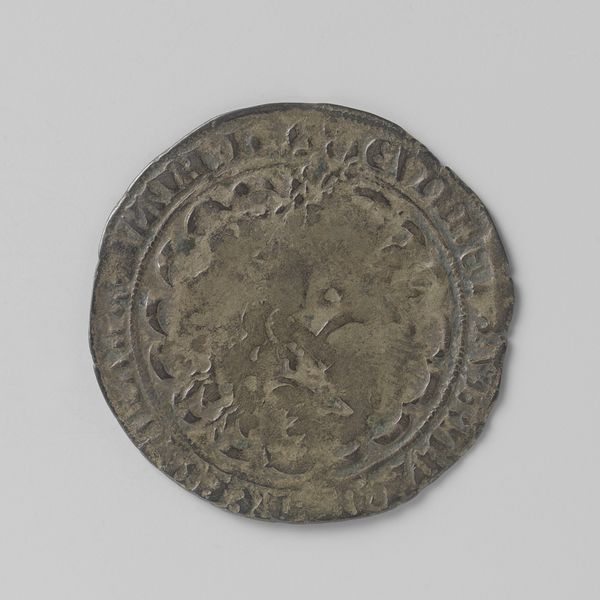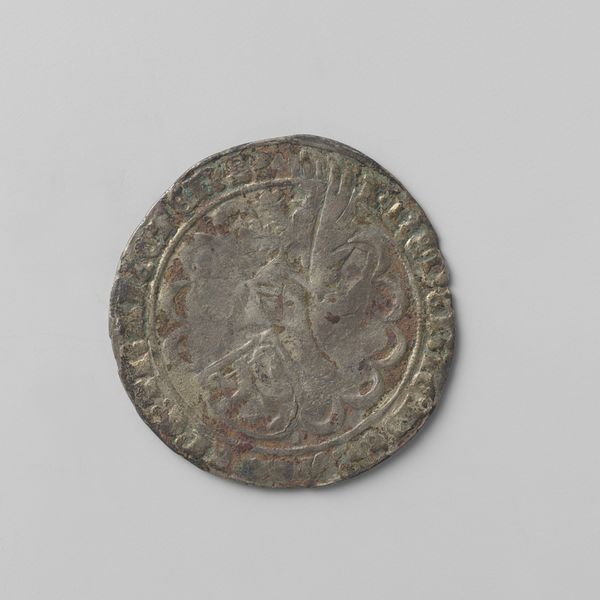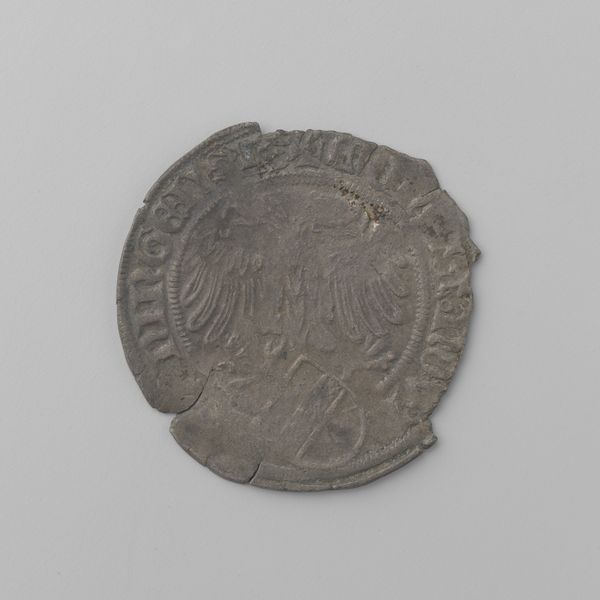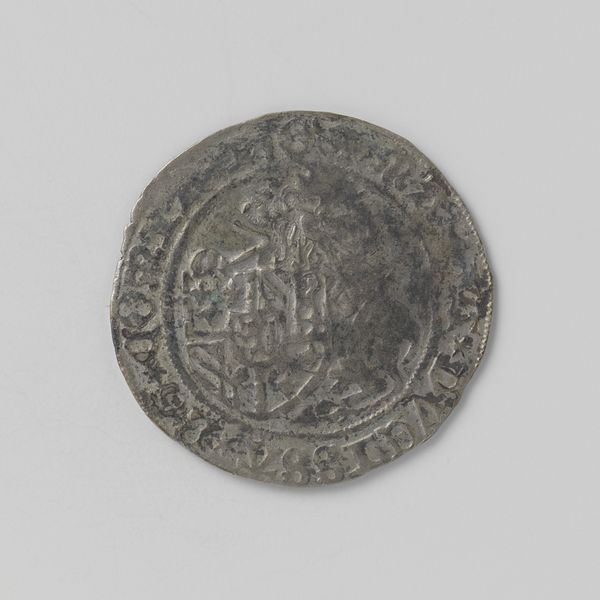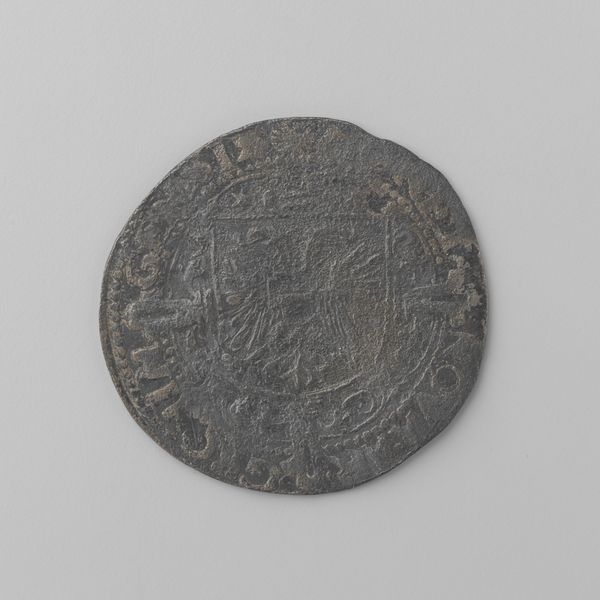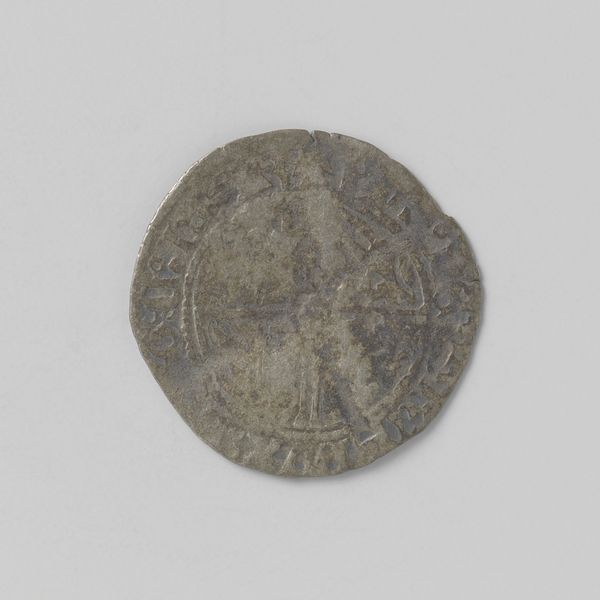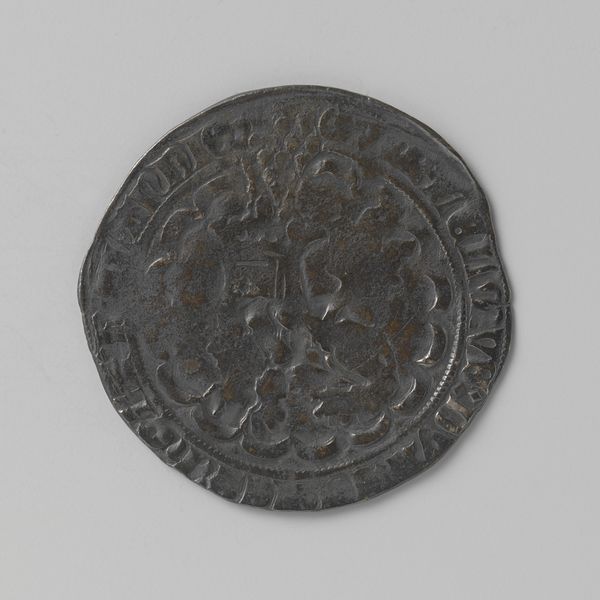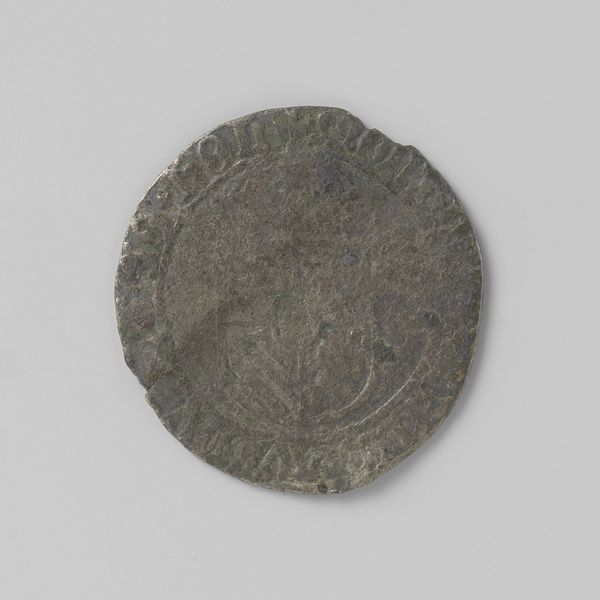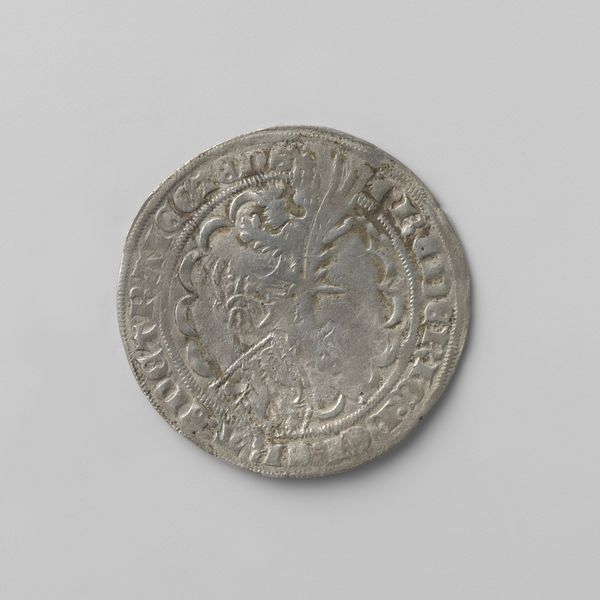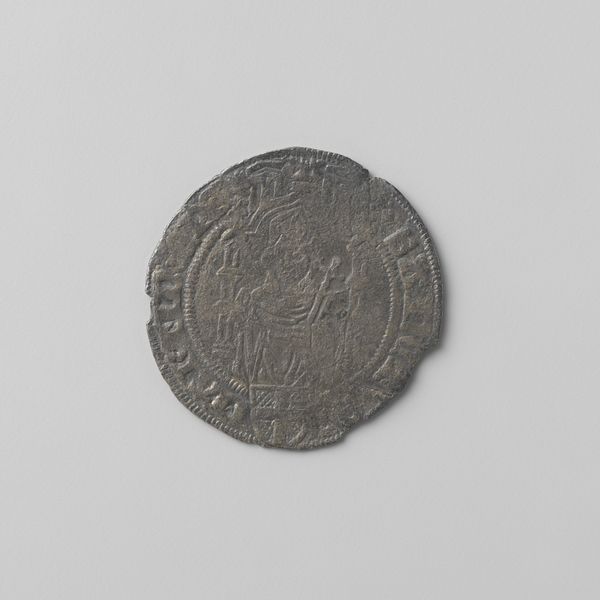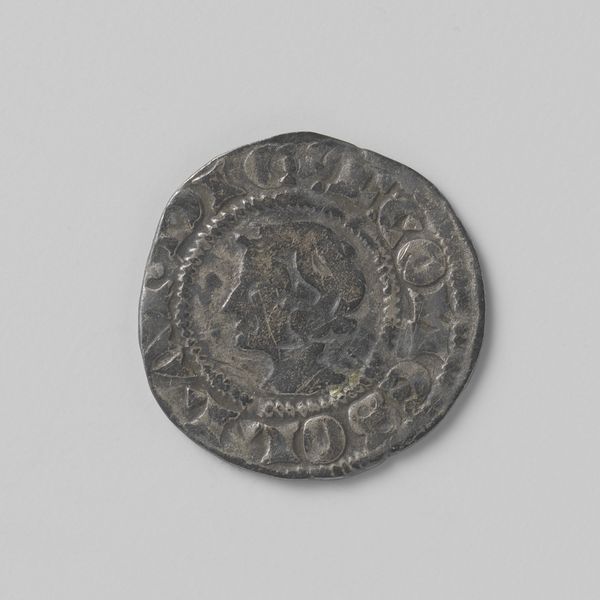
Utrechtse dubbele plak van Frederik van Blankenheim, 1393-1423 1393 - 1423
0:00
0:00
metal
#
medieval
#
metal
#
ceramic
#
coin
Dimensions: diameter 3.1 cm, weight 3.69 gr
Copyright: Rijks Museum: Open Domain
Curator: Up next, we have an interesting specimen—the Utrechtse dubbele plak, dating between 1393 and 1423, associated with Frederik van Blankenheim. It’s crafted from metal, offering a tangible connection to late medieval Utrecht. Editor: It's striking how muted and worn it appears. There's a somber cast to the entire composition—the color seems drained from the metal. The edges are irregular, like it’s borne witness to a lot. Curator: Exactly, the materiality speaks volumes. The metal, most likely silver, suggests value, of course, but also consider its role in trade, in the social fabric of the bishopric of Utrecht. These weren't just symbols; they were instruments of power, enabling economic exchange and political influence. The production process itself—the smelting, the striking of the die—required specialized labor. Editor: From a formal perspective, consider how the circular format dominates; all of the engravings radiate from the center and back outwards again, and even the edge design reflects the original form. Despite its worn condition, we can discern symbols within. Can we infer any significance from these images? What's the nature of their construction? Curator: Absolutely, let’s consider the symbols. There appears to be a crest containing wheat stalks which served to broadcast Frederick’s position of leadership, and likely connected his reign with prosperity of the realm, connecting tangible well-being with spiritual legitimacy. The minting process also reinforced authority. Editor: Looking closely, you are so right! Its composition reveals not just artistry, but the intention of transmitting symbols of power, influence and perhaps divine right of the governing figures of Utrecht. Even its damaged, incomplete circumference serves to enclose its historical significance. Curator: Thinking about the coin, not just as an aesthetic object, but as a tool—a medium of exchange interwoven with economic and societal structures transforms our perception. These artifacts provide concrete evidence about labor conditions and power structures that existed at the time. Editor: Indeed, you are able to interpret it through a lens of practical utilization and the societal implications connected with this sort of symbol, whereas my perception begins with its intrinsic formal elements, as an independent element which encapsulates intrinsic characteristics that radiate both literally, and metaphorically. Curator: Well, there’s my two cents on this Utrechtse dubbele plak, I’ve focused on the way it functions in society! Editor: And I, of course, found its intrinsic qualities and arrangement to be the most compelling aspect!
Comments
No comments
Be the first to comment and join the conversation on the ultimate creative platform.
